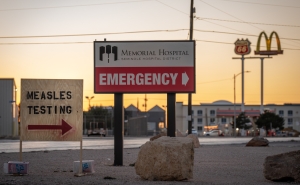Why We’re Still Waiting for a Pandemic Treaty
The pandemic treaty deadline has passed, but the need for it hasn’t.

COVID-19 uncovered catastrophic weaknesses in the international community’s ability to respond to a pandemic, from inequities in vaccine and test distribution to insufficient international communication.
In May and early June of this year, WHO member countries faced a deadline to pass a pandemic treaty that would address those weaknesses but failed to come to a consensus. Now, countries are continuing negotiations to put guidelines in place before the next World Health Assembly in 2025—and before the next pandemic.
This Q&A, adapted from the June 28 episode of Public Health On Call, Alexandra Phelan, SJD, LLM, LLB, a senior scholar at the Johns Hopkins Center for Health Security and an associate professor in Environmental Health and Engineering, discusses the attempt countries made over the summer to negotiate a pandemic treaty, why it wasn’t passed, and what’s next.
What is a pandemic treaty?
At the height of the COVID-19 pandemic back in 2021, countries recognized that the international system had really failed to respond to the crisis. That included what the World Health Organization had been tasked with doing and the countries' own reactions, but the big issue was what we saw with inequity in the distribution of vaccines over the course of the pandemic.
So, guided by the principles of equity and solidarity, the member countries of the WHO started to negotiate a new international treaty to address pandemic prevention, preparedness, and response—and the gaps in international law for those areas.
What were some of the proposals?
They cover issues like upstream prevention, and looking at the drivers of pandemics. This includes taking a One Health approach—looking at the intersections of animal, human, and environmental health—to things like changes in land use and climate change.
They also covered the preparedness of health systems to ensure a strong healthcare workforce, as well as details like the transfer of technology, the equitable distribution of vaccines, access to pathogens for research, and strengthening our global logistics and supply chain networks. An incredibly broad set of areas have been captured in the draft so far.
Tell us more about the “transfer of technology,” which has been a contentious issue.
When you want to make a vaccine, diagnostic, or new drug, there's a lot of technology involved. There’s “soft technology,” which is the know-how of how to make the product. Then there’s the “hard technology,” the actual factories and the equipment required.
The process of making a vaccine requires that “transfer of technology” from the people who hold the intellectual property, or knowledge, to groups that are going to produce that technology.
Technology, particularly for pharmaceuticals, is largely concentrated in the Global North. The idea is that the knowledge, and potentially even the hard technology, will be made available to the Global South, and to countries at different income levels.
So there is a group of higher-income countries that, for lack of a better term, hoard some of this technology and a group of countries that want equitable access to the technology.
In the recent versions of the draft, we’ve seen a lot of language around facilitating technology transfer rather than requiring it.
One thing to reflect on is a large reason why this imbalance exists. High-income countries have these financial and technical resources because of long histories of colonialism and slavery. These are entrenched inequities.
There’s a historical dynamic at play: Global South countries have been subjected to scientific extractivism, where high-income countries’ researchers have come in, isolated pathogens, taken them out of the country, and then used them to produce vaccines, diagnostics, and therapeutics.
That's why we see pathogen access and benefit sharing as a big issue in the treaty. High-income countries need to get access to pathogens in order to create vaccines, diagnostics, and therapeutics, and they’ve pushed lower-income countries to provide that without agreeing to equitably share the benefits that arise from the use.
The treaty failed to pass over the summer. Now what?
At the World Health Assembly in June, right down to the last minute, countries were trying to see if they could come to an agreement and adopt this treaty. When they realized they couldn’t, they decided that they wouldn't end the negotiation process. Instead, they would extend it for up to another year at the next WHA in May 2025 or, if they can come to an agreement earlier, convene a special session of the WHA later this year.
Why is there such urgency to pass this plan?
We know that climate change, biodiversity loss, and chemical pollution are rapidly accelerating and driving the emergence of potential new pandemic threats. Interactions between animals and humans from changing land use—the interface of potential zoonotic spillover—are increasing rapidly. Time is of the essence to get some of these governance structures in place now so that we are prepared for the next pandemic.
We have some international law for pandemic influenza. But what we saw over the course of COVID-19 is that a lot of those norms and expectations we have for influenza were undone within the context of COVID-19.
With the pandemic treaty, even if we end up with a very high-level agreement, at the end of the day, part of it is about rebuilding trust between countries. It's about rebuilding those norms, those expected standards of behavior between countries and institutions like the WHO.
This interview was edited for length and clarity by Rin Swann.





